The Missionary
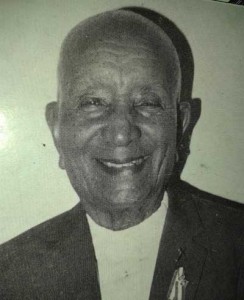 The Reverend Doctor Ephraim Alphonse began his life work as a mechanical engineer. In fact, he was the engineer on board the launch which transported his soon-to-be mentor, the late Reverend M.C. Surgeon, to Cusapin and the Indian Mission. At first, his assignment was to escort Reverend Surgeon safely to and from the Mission. As time went on, he took on increasing responsibility and exhibited real affinity for the work on the Methodist Church in the most remote settlements of Panama. That unexpected and rugged introduction paved the way for Ephraim Alphonse to observe firsthand the operations of the Methodist outreach to the native peoples living in that region. During this period, he saw and heard the call of God to work and provide leadership to the Gnobe (Valiente) mission, which included Cusapin, Blue Fields, Tibobi and Cricamola, indeed the whole Cusapin Peninsula. His life partner in this ground-breaking work was his wife of more than 50 years, Filberta Alphonse de Ogilvie. The daughter of a Native woman from Columbia and heir to the indigenous culture, she assisted Ephraim in his translations, music and outreach, instituting the Mission as the core of their life together.
The Reverend Doctor Ephraim Alphonse began his life work as a mechanical engineer. In fact, he was the engineer on board the launch which transported his soon-to-be mentor, the late Reverend M.C. Surgeon, to Cusapin and the Indian Mission. At first, his assignment was to escort Reverend Surgeon safely to and from the Mission. As time went on, he took on increasing responsibility and exhibited real affinity for the work on the Methodist Church in the most remote settlements of Panama. That unexpected and rugged introduction paved the way for Ephraim Alphonse to observe firsthand the operations of the Methodist outreach to the native peoples living in that region. During this period, he saw and heard the call of God to work and provide leadership to the Gnobe (Valiente) mission, which included Cusapin, Blue Fields, Tibobi and Cricamola, indeed the whole Cusapin Peninsula. His life partner in this ground-breaking work was his wife of more than 50 years, Filberta Alphonse de Ogilvie. The daughter of a Native woman from Columbia and heir to the indigenous culture, she assisted Ephraim in his translations, music and outreach, instituting the Mission as the core of their life together.
The British Methodist Church established a mission field among the Guaymi Indians 1926-27 under the leadership of the Rev. Ephraim S. Alphonse who not only lived, worked and raised his own family among the Valiente Indians but was also prolific in translating the four Gospels of the New Testament and many hymns into the Guaymi dialect; he also put into writing the Guaymi Grammar and developed a Dictionary in Guaymi, Spanish and English. These literatures can be found in the archives of the Smithsonian Institute. Methodists established a main church in Cusapin and smaller congregations around the Peninsula The Methodist Church also established a medical clinic in Cusapin.1
When the missionary Ephrain Alphonse plunged into the Panamanian forest to discover at the secret shrine of an old diviner the true name for God, he was at the same time lifting God to the level of everyday usage. He had consummated a genuine religious development. At the time of his arrival, the shrine cult had moved out of daily life to the margins of settled living. The number of people competent to speak authoritatively about it had dwindled, leaving only a frail diviner to guard its fragile memory in a shadowy grove. The missionary entered the scene to rescue a suppressed religion, not, of course, in its entirety but in its positive tendencies. It is as if he had picked up the dying torch in a relay race and ignited it with common applause.2
The Early Years
Ephraim Simeon Alphonse was born on June 24 1896 on the island of Carenero which is in Bocas del Toro Province. His father, John Alphonse, was from the island of Martinica and his mother, Carlotha Reid, was a native of Bluefields in Nicaragua. Alphonse was educated in what we call Spanish School in Bocas del Toro between 1903 and 1920. Upon finishing, he went to Kingston, Jamaica to attend Calabar Theological College from 1924 to 1926.
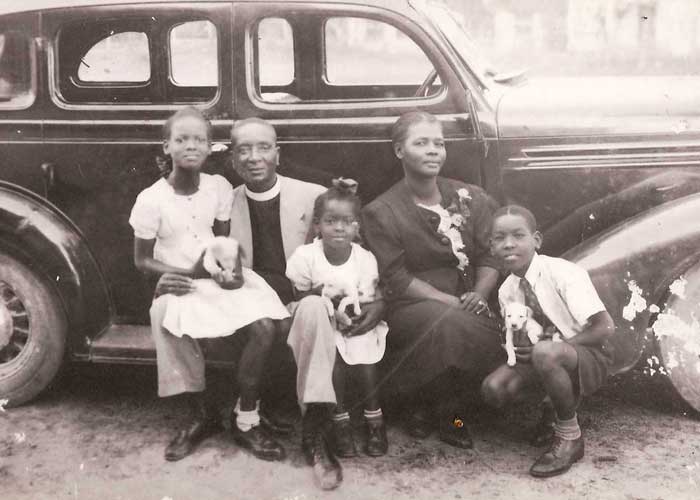
Ephrain was an African American boy who lived in Panama while his father worked on the canal. He was an adventuresome lad, devoted to God. One day, when he was nineteen, Ephrain escorted a Methodist missionary through the dangerous reefs and treacherous streams along the northeast coast of Panama. While piloting this small boat and chatting, the missionary was so impressed with Ephrain that he asked, “How would you like to teach school in one of these Valiente Indian villages?” Ephrain knew the Valiente Indians’ reputation. He knew they earned the name ‘Valiente’ which means ‘brave and warlike’. He knew they did not speak Spanish and he knew not a word of their language. But the missionary’s question and his love for Jesus Christ stirred Ephrain’s heart. He wanted to do whatever he could to help these neglected people. So he accepted a teaching post and went to live in one of the Indian villages.
Ephrain’s teaching actually began with learning. He knew to be an effective teacher he needed to be able to communicate well with the people, so he began the laborious task of learning an unwritten language, one word at a time. He learned quickly, and before long Ephrain began offering five cents to anyone who could introduce him to a word he didn’t already know. For twelve years Ephrain lived among the Valientes, learning not just their language, but also their rich heritage of folklore, legends and tribal history. He developed his own system of putting together consonants and vowels to form root words and slowly built up a written form of the local language. Ephrain knew the only way the Valiente Indians would know God loved them personally is if they could hear it and read it in their own language. Spanish wouldn’t work. So, prompted by his love for the Indians and his love for God and His Word, Ephrain tried his hand at translating two gospels from the New Testament into their language.
This whetted his appetite for translation work and evangelism. Ephrain left the tribe to seek out further training. He studied for several years, attended seminary and became well-versed in Greek. At last he was ready to tackle the translation of the entire New Testament so he eagerly returned to the Valiente people. He revised his early work and completed many more passages from the New Testament. Although he was not supported by his superiors, he pressed on. Eventually several books of the New Testament were completed and published by the Bible Society.
Servant of God
Despite a serious heart ailment which would have hospitalized other men, Ephrain carried on his work among the Valiente Indians, translating the rest of the New Testament, directing five schools and shepherding many new churches in the area and throughout the Caribbean. Eugene Nide says of Ephrain in his book, God’s Word in Man’s Language, “Of all the missionary translators in the Western Hemisphere, probably no one has entered more fully into the rich realms of aboriginal speech than this humble African American servant of God who (worked) untiring among a needy people.”3
For the Valiente Indians of Panama the name for God is a great mystery. When the missionary Ephrain Alphonse tried to discover the name, he was taken to see an old medicine woman in the tropical forest of Bocas del Toro. The woman then engaged in a seance, and, in a trancelike state, she pronounced the sacred name of God. ‘These men,” she declared, ‘are talking about Ngobo, the God of heaven and earth. Listen to them!’ . . . Ngobo, falling from the lips of the old diviner, became equally the hallowed name for the God of the Scriptures of the Christians.” 4
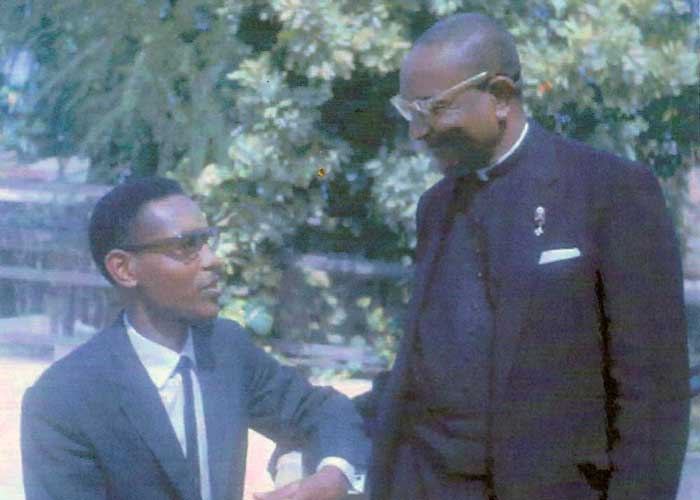
In addition to his missionary and ministerial work, Alphonse was a prolific writer and translator. Who’s Who of Jamaica (1941-1946) attributes to his achievements having “reduced the Valiente Indian Language to writing; wrote the first grammar in Guaymi and grammar and vocabulary in Hindustani, Spanish and English; also translated four Gospels in the Valiente Tongue and became translator of scripture for the American Bible Society, 1928 and 1929.”
He was also a composer and compiled a hymn book and a catechism. In addition, he was a playwright having written and staged the following plays in Jamaica, “Youth-time and Eternity” and “The Gospel Ship.” He also authored “Among Valientes” and “The Pageant of the 4th Force.” He travelled to Costa Rica, France, and to England, 1938, where he gave missionary addresses on the Valiente Indians.
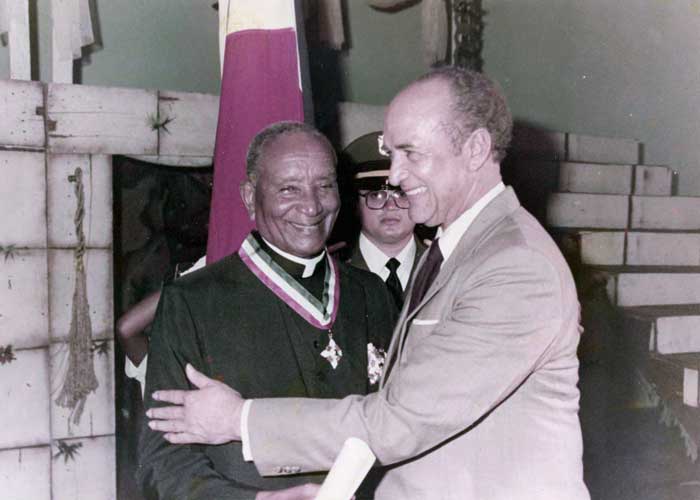
He was honored with Order of Vasco Nuñez de Balboa and a Medal of Belisario de Porras. He died on May 31, 1995 and according to his grandson, Wesley Jones Alphonse, “His ashes were buried in his beloved Kusapin on September 5, 1995.”5
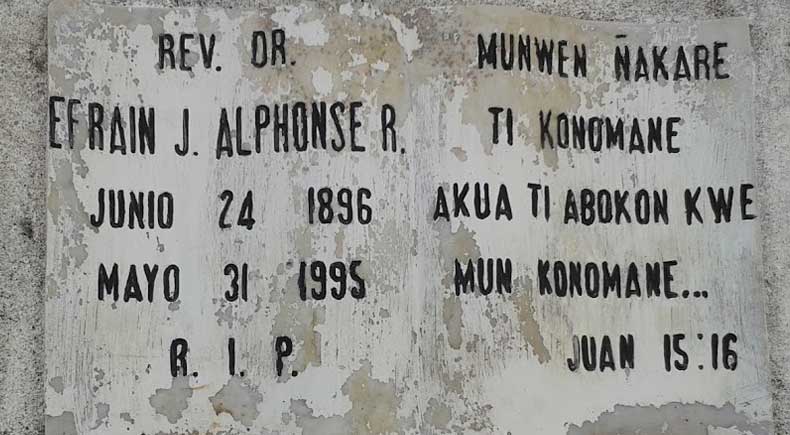
He did, however, work to his very last breath leaving behind him an unending list of attainments to better the lives of thousands of people especially the Guaymi and the Naso Indians of Bocas del Toro Province who remember him with great love.
1 Wikipedia
2 Finding God in Panama: The life of Efrain Alphonse
3 Efrain Alphonse – Translator
4 (Translating the Message, 196) The Missionary Impact on Culture, Yale scholar Lamin Sanneh
5 Bishop Ephraim S. Alphonse- A Giant of Love
